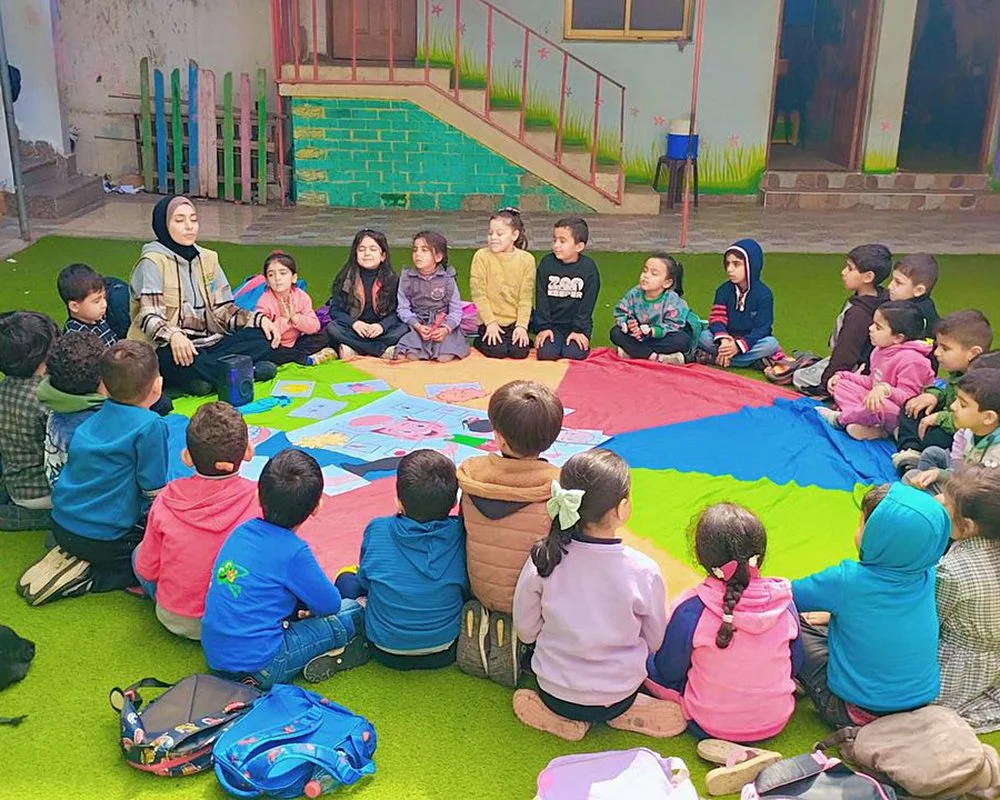A CMBM team member hosting a psychological support session for youth in Gaza.
14 year old Zaid* hasn’t known peace in years. Israeli strikes destroyed his home and killed most of his family, forcing him to wander from place to place in search of safety. After endless displacement, Zaid and his few remaining loved ones finally reached Al-Nuseirat Camp, central Gaza.
Even here, safety is out of reach. Missiles strike the camp indiscriminately. Food and clean water are scarce. Once quiet, peaceful neighborhoods have been reduced to rubble and ash. Entire families have been buried. Even the simple act of retrieving aid could be a death sentence.
In December 2024, dozens of people were killed in an Israeli air strike on Gaza’s Nuseirat refugee camp. Ramadan Abed/Reuters.
Each day was a struggle for Zaid to survive, and every sleepless night he was haunted by the loss of his family and friends. Surrounded by suffering with no way of controlling his overwhelming emotions, he listlessly drifted through each moment in a haze of grief and fear.
In such desperate conditions, resilience is key to survival. And with our partner, the Center for Mind Body Medicine (CMBM), Zaid was finally able to build the resilience he needed to take back control of his life. CMBM is an incredible nonprofit helping vulnerable communities around the world develop the psychological tools they need to survive and heal. In Gaza, they’re helping youth like Zaid navigate through the trauma plaguing their everyday lives.
When Zaid joined CMBM’s psychological support sessions, he learned to calm himself through drawing, gentle movement, breathing exercises, and visualization. For the first time in months, he could express the pain he had carried alone. He could finally see a path forward through the suffocating fog.
A CMBM team member leading breathing exercises with children.
“I have become much calmer and better able to control my reactions. I have been interacting more with others and building new relationships. I have started to sleep better. I have applied the skills I learned to manage stress and protect myself.”
One of the breathing exercises has become a lifeline whenever painful memories resurface. And with visualization exercises, Zaid revisits his most cherished moments with his father and siblings. In defiance of the chaos surrounding him, Zaid found warmth and comfort within himself.
“I feel like I am strong, safe, and more confident facing life’s challenges. I hope these sessions continue, because there are many others like us who just need someone to listen to them and remind them that they are not alone."
With our support, CMBM’s programs have empowered more than 105,000 Gazans with the tools to heal, cope, and reclaim control—even in the face of unimaginable loss. And at LHI, we believe this is what meaningful aid looks like: starting with listening and responding to what communities themselves ask for. Whether it’s material relief or tools to process trauma, we partner with trusted local organizations like CMBM to ensure our work is both culturally appropriate and community-led. By helping people build resilience and reclaim dignity, we lay the foundation for communities better equipped to survive, recover, and rebuild.
*Name changed for anonymity.


























